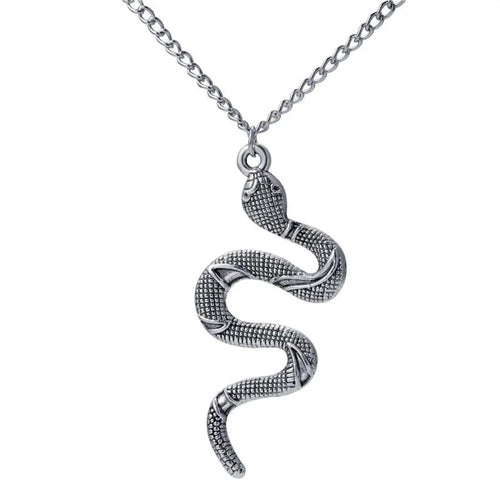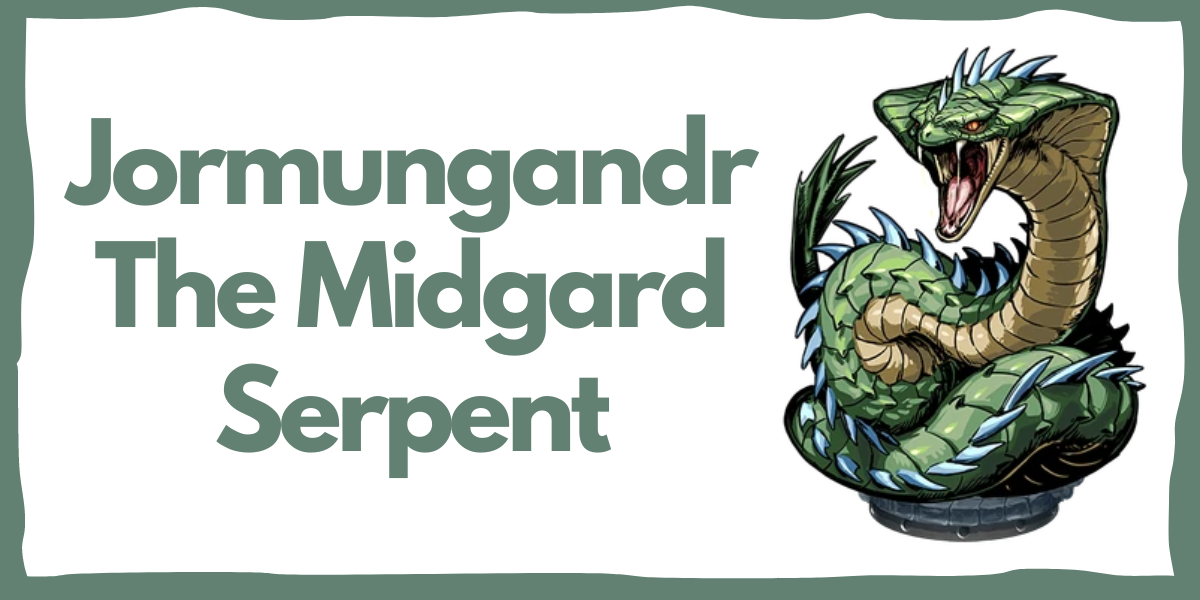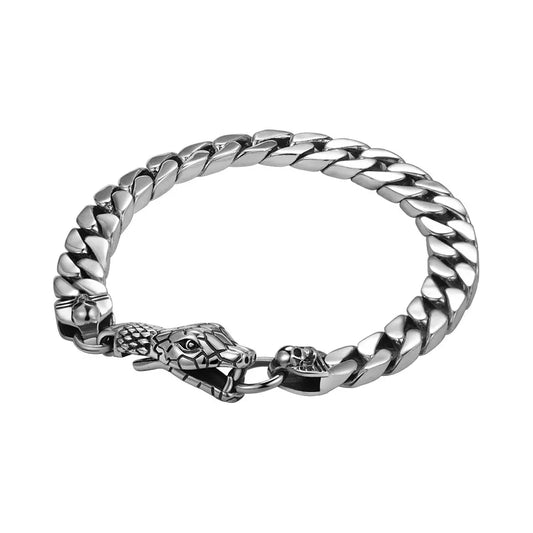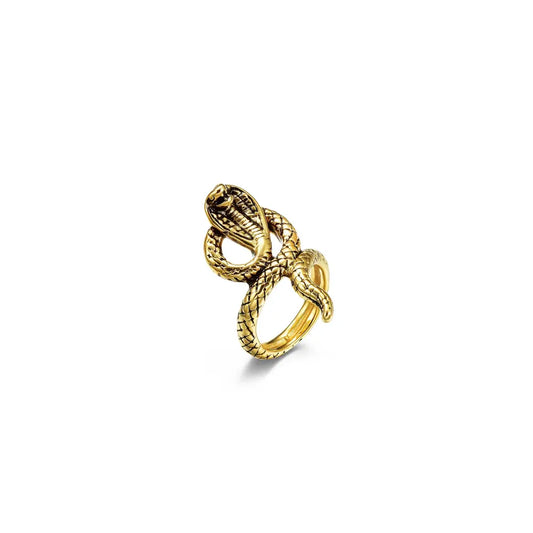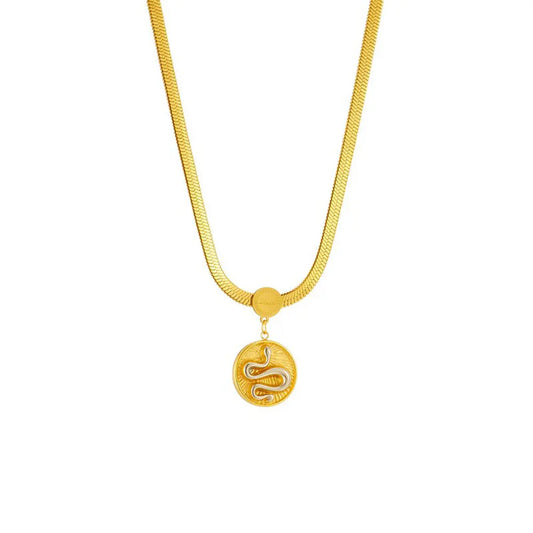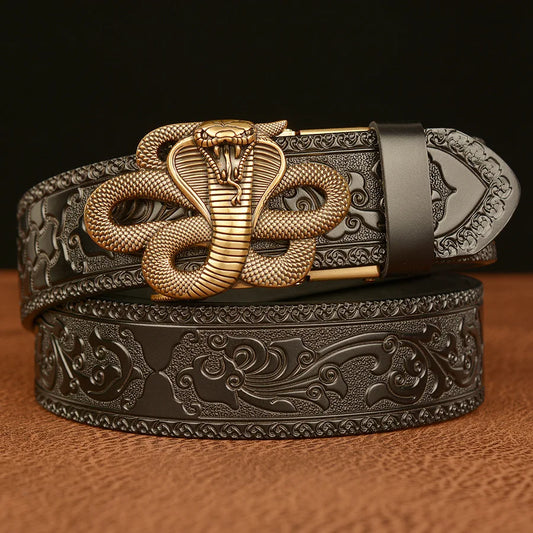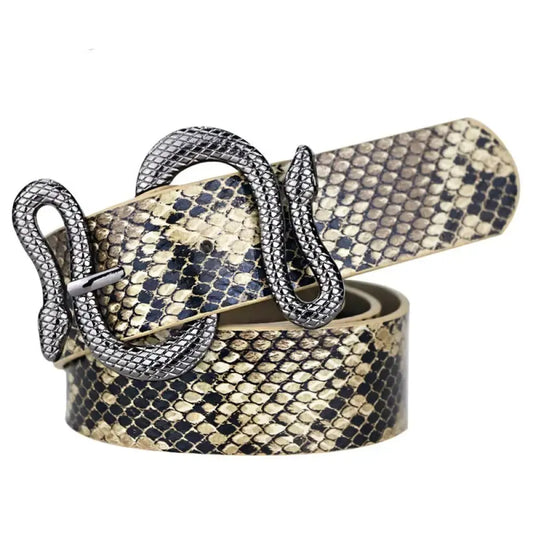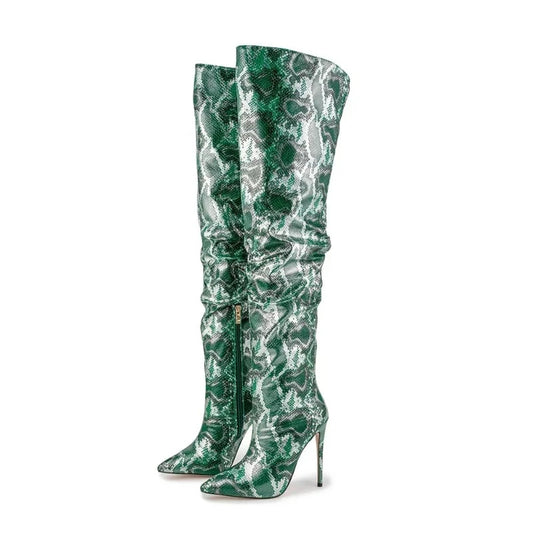With all the pop culture comics and movies, did you ever wonder what really happened at the battle of Ragnarök? Who could kill the mighty Thor? Where did the Ouroboros of the north live? Was the Midgard Serpent good or evil? But in the first place, who was Jormungandr?
My name is Laura Svensk and I am a writer and member of the research group of the Snakes Store’s team of studies on serpents. Besides our keen interest in these esoteric reptiles, we conduct scientific as well as cultural studies on serpentine elements that existed through history and worldwide cultures. Whether mythology, or moral stories, snakes play an undeniable role in building the fundamentals of our modern societies.
Regarded as Ouroboros of the north, Jormungandr was the Midgard Serpent who dwelled in the depth of oceans. He was an offspring of Loki, the divine trickster. Jormungandr is mainly renowned for his battle against Thor, the son of Odin, in an allegorical battle of the opposing forces that exist to balance life.
This article explores the journey of Jormungandr according to Norse mythology, including:
-
Jormungandr’s appearance, inborn traits, and familial roots
-
The Midgard Serpent and Thor: the beginning and end of their conflict
-
The metamorphosis of Jormungandr through different cultures until today
Below, you can learn more about both modern and Saxon folktales about the Midgard Serpent.
Nordic (and Germanic) mythology may not be as well known as Greco-Roman mythology but it is one of the richest in Europe and conceals many treasures. The world of the Nordic people was often presented to us through a paradoxical vision exploring their tales and legends.
They spoke Saxon languages, not Celtic, Latin, or Slavic, that saw dialects disappear and others develop during upheavals around Europe from 400 – 600 AD.
The German, Dutch, Flemish, English, Danish, Swedish, Norwegian, and Icelandic languages all originated from Saxon dialects. The Germanic people developed their languages alongside their legends, religions, and gods. There is little evidence of German beliefs in the countries where Christianity established itself early on, so one must look to Scandinavia, and specifically Iceland (which only became Christian during the 12th Century) to further understand Germanic mythology. Harsh living conditions contributed to differing views within Greco-Roman mythology, the most distinct one being that the gods are mortal.

The Saxons did not produce clear writings, so the few written testimonies to offer an insight came from outside observers, including the Roman historian, Tacitus. Runes had a mystical meaning and were used for carved inscriptions on wood or stone and not lengthy written treatises. The written sources mostly date from 13th-century Christian authors who traveled from Iceland, where the ancient gods took longer to disappear.
Around 1220, the brilliant scholar, landowner, and prominent Christian political figure, Snorri Sturluson, wrote a book about pagan gods and myths to enlighten poets in the future. This book, the Edda, provides a valuable overview of Nordic mythology. A collection of mythological poems entitled the Poetic Edda is another source of information that was written in the 12th century in Iceland, before the Edda. Many northern mythology gods exist, but for the purposes of this blog, we will focus on Jormungandr, the famous snake enemy of Thor. We will start with defining him and his impact on Nordic mythology that continues to exist in stories told today.
You may be familiar with the giant snake creature found in the depths of the sea, called Jormungandr. According to Norse mythology, Jormungandr should reappear at the end of time to destroy the 9 worlds of Nordic mythology and the Yggdrasil, which hasn't happened yet…
1- Who was Jormungandr?
a) Physical description of Jormungandr
Appearances of mythological beasts have always caught people's imagination. Be prepared as we discuss perhaps the greatest beast amongst the impressive ranks of Norwegian mythology, Jotunheim, a kingdom full of giants!
You're probably wondering about the name - "Jormungandr" literally translates to "necklace of the earth", illustrating the creature's sheer size. Legend says this snake wrapped itself around Midgard and finally bit its tail like the ouroboros, with a mouth full of teeth and enough venom to bite a giant.
b) Personality
Jormungandr's large size does not represent a strong character and his limited intelligence and personality are only revealed during his tense encounters with Thor. Jormungandr was a creature of solitude and preferred to remain underwater in darkness.
c) Family
Loki, the god of chaos, and his giant mistress, Angroboda, were the parents of Jormungandr. He inherited his mother's size and his father's destructive tendencies. His parents had two more children; including a giant wolf called Fenrir, who was just as destructive as his snake brother but much smarter. The prophecies predict they will fight together during Ragnarok.
Another sibling is Hel, ruler of the underworld, who is less aggressive and despite finding herself in a dark position, still kept modest relations with the rest of the world. This all changed when Odin encountered and fought against Loki and Angroboda’s children. Odin declared them all outcasts, threw Jormungandr in the ocean, condemned Hel to the underworld, and planned to trap Fenrir alone on an island.

2- Stories about Jormungandr
a) Thor's fishing trip with Hymir
It all started with an invitation to a banquet held by two undersea giants, Aegir and Ran, but they needed a huge cauldron for the biggest amount of mead. The gods were due to attend, but the giants and their children had a big appetite!
Hymir, a giant living in the perilous kingdom of Jotunheim, possessed a huge cauldron and Thor volunteered to visit him. Hymir prepared three bulls for Thor's visit, but the giant had underestimated Thor's legendary appetite. The young god ate two bulls in one sitting and Hymir angrily announced they would fish in the morning for the next day's food. He wanted to hold on to his cattle!
The young Thor went fishing the following morning. Hymir thought they would fish small prey for a few hours, but Thor killed the bulls to use as bait. Hymir, furious at Thor's unruly behavior - but fearful of him - decided not to cause a confrontation, and they departed in Hymir's fishing boat.
Thor returned the boat to the fishing area. As Hymir prepared the bullheads as bait to fish for two whales, he was annoyed to see Thor relaxing and gazing at the ocean.
Hymir eventually told Thor to go home, but the young boy misbehaved again and escaped by rowing out to sea. Hymir nervously reminded Thor that the mythical serpent ( Jormungandr) hid in the dark ocean depths and returned home, feeling happy and accomplished with his catch of two whales.
However, Thor just did what was in his head as usual and rowed to a spot he dangled a bull's head from a large hook, finally tossing it into the sea. A moment of tense silence followed... Then something pulled the god’s line so hard he almost fell into the ocean. Feeling a superhuman force, he started to shake and felt fear, his muscles fully contracted.
Hymir was aware that Jormungandr was the only creature who could test Thor's strength and also knew that if the serpent emerged from the depths, the end of the world would begin. Watching from a distance, the giant saw Thor and the serpent battle and Thor seemed stronger until the snake's hideous head finally emerged from the water as Thor grabbed his hammer.
In a split second, Hymir saved Thor by cutting the fishing line as the snake splashed back into the ocean waters creating impressive waves as he sunk. A furious Thor pushed Hymir into the sea, and left the two whales at Hymir's house before taking the cauldron he originally came for. Thor returned to Asgard, still fuming after escaping Jormungandr.

b) Why this hate between Thor and Jormungandr?
We can know that Thor and Jormungandr were to kill each other in the battle of Ragnarok, but why did they despise each other?
-
The difference between the origins
The origins of both are the first areas of focus. Thor was born into a tribe of gods and was the son of Odin, the most hated by all the Northern Pantheon giants. On the other hand, Jormungandr was the son of Loki-Trickster, who despite living among the gods was not held in high regard. Maybe Loki had mixed emotions and some say he was a pure giant and hailed from giant heritage. If these legends are true, it is understandable that Jormungandr and Thor’s dislike for each other lay in their backgrounds.
-
Competition at Utgard-Lok
Norwegian mythology says Thor and Lok traveled to the land of Utgard-Lok and were not greeted by the gods on arrival who laughed as they seemed too small. Thor angrily agreed to the giant of the hall, the King of Utgard-Lok's challenge, and bring the cat to the gym. Then, to everyone's dismay, Thor could only lift the cat's paw. Famous for his drinking skills, Thor entered the drinking contest but could not even finish Utgard-Lok's drinking horn.
After Thor departed Utgard-Lok, the giant king said everything was ready and stated the cat Thor tried to raise was really Jormungandr, who was so huge, he surrounded Midgard. The drinking water pipe Thor drank extended to the ocean which meant by the end of the drinking contest, Thor had drunk nearly half the seawater. This ignited the fire to defeat Jormungandr.
-
Thor's fishing trip
You already know this part.
So...
We may think these three stories explain Thor and Jormungandr'' hatred for each other. Legend says they killed each other in their final battle. Odin and Fenrir were sworn enemies following Odin'' warnings against Ragnarok. Thor despised Jormungandr, for being an enormous snake and the only challenger.
c) Ragnarok: The war between the giants and the gods
Nordic mythology refers to Ragnarök as a prophetic end of the world, following a three-year winter without the sun known as Fimbulvetr and a great battle fought on the Vígríd plain. Most deities including Odin, Thor, Freyr, Heimdall, and Loki, the giants, and nearly all men would perish. Several natural disasters would see the world submerged by waves and destroyed by fire. Survivors of this catastrophe, including Baldr, Höd, and Vidar would then meet with Líf and Lífþrasir, the only humans hoping to repopulate the world.
Ragnarök is an important theme in Nordic mythology and is described in the poetic Edda. The section about Völuspá was probably written by an Icelandic cleric after the year 1000 but is also in Snorri's Edda. This was written by a 13th-century scholar, Snorri Sturluson, who was himself inspired by the poetic Edda.
Many studies have focused on Ragnarök and its controversies, to confirm the original story which was written at a later stage, after the Christianization of the Nordic world. Some scholars argue that biblical accounts of the Last Judgement, the Revelation, in particular, the end of the millenarian world, and Ecclesiastes, inspired references to the prophetic well-designed. Other Indo-European mythologies may also show external pagan influences or a common origin of the myth. Some theorists believe Christian clerics borrowed these ideas from other cultures and rewrote them, erroneously attributing them to Viking mythology and distorting our understanding of the Scandinavian faith. Written observations of natural disasters in Iceland could also be linked to these legendary tales.
The Ragnarok war between the giants of Jotunheim and the gods of Asgard featured a battle between Jormungandr and Thor. The snake resurfaced from the waters in icy winter, an appearance causing tremors across the nine worlds, and even severed ties between Loki and Fenrir, who Odin imprisoned while waiting for Ragnarok.
As a free man, Loki will lead a giant army prepared to destroy Asgard. Fenrir's enormous jaw swallowed everything, including Odin, and this famous creature's incredible breath will poison all skies.
Thor eventually attacks his arch-rival, Jormungandr, crushing the serpent with his fearsome hammer. Following this triumph, Thor turns and takes nine steps, and falls to his knees while choking on the snake's poison. He will have an agonizing death in a matter of seconds.
This is one of our creations celebrating Norse mythology's legendary creature, Jormungandr, the mythical snake.
3- Cultural representation
a) Origin
Nordic mythology: the Edda in Prose and the Poetic Edda, dating from the 13th century, feature Jormungandr. He also appears in old stone sculptures from before the 13th century but some are so faded that some legendary characters cannot be deciphered.
b) Modern appearances
-
Yu Gi Oh
Manga Yu Gi Oh is renowned for its famous card game. The incredible creature, Jormungandr, even appears on a personalized card, reflecting the connection between ancient history and contemporary times.
-
Marvel
Alongside many Scandinavian characters, many comics have featured Jormungandr, and he also appears in Marvel's Thor series. Nordic mythology and the giant snake have also influenced fantasy writers including JRR Tolkein and Neil Gaiman.
-
Jormungandr the manga
Jormungandr (ヨルムンガンド, Yorumungando?), a manga from Keitarō Takahashi, was pre-published between 2006 and 2012 in publisher Shogakukan’s monthly magazine Monthly Sunday Gene-X and comprises eleven volumes.
In December 2011, an adapted animated television series produced by White Fox Studio and directed by Keitaro Motonaga was announced. Yousuke Kuroda’s script covered two seasons, broadcast from April 10 to June 26, 2012, and continued from October 10 to December 26, 2012.
Jormungandr has fascinated many cultures, in similar contexts but named differently. Linked to earthquakes and floods, this creature was often viewed with an evil eye and was even considered as a trigger in ending mankind. Its incredible history features in Marvel, Yu Gi Oh, and manga, with the same title. It must be remembered that the beauty of this mythology that fascinated our ancestors continues to fascinate the current inhabitants of this world.
4- Bring out your inner Viking!
After learning about the familial roots of Jormungandr, as a son of Loki and Angroboda, you are now aware of the root cause of the Midgard Serpent’s giant size and destructive tendencies. Aside from reviewing a piece of rare and wholesome literature, you can now recount the complete saga of the conflict between the thunder Thor and the nordic ocean’s serpent to your friends and families at the next party.
Not only about the ancient Asgard poems, you have also learned about the metamorphosis of Jormungandr after the first written accounts that reached to Japanese culture, and modern visual art and media- a knowledge hidden from a great many today.
Interested in snake mythology? You can wear a piece of ancient stories as a personal ornament. Several snake bracelet designs have remained from the ancient Norse culture, leaving behind symbolic jewelries that were worn to appeal to the serpentine gods.
Explore the mythological Torque bracelets in the link below👇🏼


































































